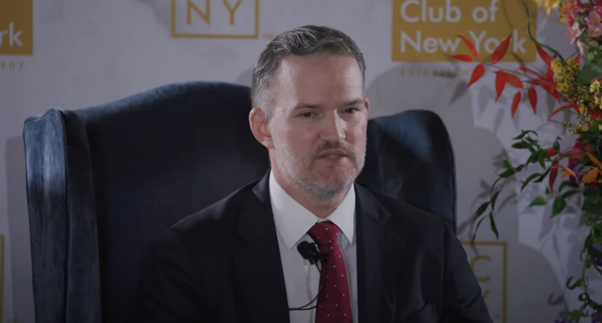
US will maintain tariffs regardless of the Supreme Court ruling as tariffs would remain a “part of the policy landscape.”
US Ambassador Jamieson Greer, United States Trade Representative, joined The Economic Club of New York for a candid conversation on the administration’s trade agenda: tariffs, reshoring U.S. manufacturing, strengthening supply chains, and recalibrating relationships with China, Mexico, and Canada.
Speaking to the audience, Greer expressed confidence that the US president’s trade policy would ultimately prevail in court.
Asked to comment if there is a “back up plan for that kind of revenue” if the Supreme Court rules against Trump, Greer said that “We are very confident in the case. We believe that the court will defer to the president on the emergency, the fact that tariffs can be used under this law.”
The United States Trade Representative declined to share specific details on the administration’s alternative plans if the court rules against, but said that “of course we will have alternative tools to explore. I am not going to give more details right now.”
But Greer insisted that tariffs would remain a “part of the policy landscape.”
The United States Trade Representative also referred to the U.S. tariffs on Chinese imports. The tariffs are around 55%, Greer said, but the Trump administration would like to find areas where trade could increase more freely.
“Right now, our average tariff on China is about an average of 55%, of course it depends on the product, but this is the average. That is the status quo.”
“If you ask the president, ‘Do we have a deal with China?’ He would say, ‘Yeah, this is our deal. I’ve got 55% tariffs on it. That’s the deal.’ So that is a good status quo,” Greer noted.
But he said he wanted to continue regular discussions with Chinese officials to try to achieve a more balanced trade relationship, where the two sides can trade a little more freely.
“I would like to get to a position with them where…we can trade, and we can trade a little more freely and in a little more transparent kind of way,” Greer said.
“But for now, that’s where we are,” he added regarding the 55% U.S. tariff rate.
US tariff revenues hit $150 billion so far this year, according to the United States Trade Representative. “I think we are about $150 billion right now, might be little more,” he said.
According to Greer, while India has maintained strong relations with Russia, its oil imports from Moscow surged mostly in the last two to three years.
The US trade chief said India has already begun diversifying away from Russia as a source of energy, acknowledging New Delhi’s sovereignty over its foreign relations.
“This is something we believe they can do and should do and frankly I can already see them starting to diversify. I think they get it. Obviously, they are a sovereign country. They are going to control their decisions. President Trump is focused on this quite discrete issue of ending the Russia-Ukraine war. We’re not trying to dictate to other countries who they can have relations with and who they can’t,” Greer said.
“But we are trying to make sure that Vladimir Putin feels as much pressure as possible,” he added.
Greek acknowledged India’s strong relations with Russia but, as he said, “India has not always bought so much Russian oil. The past two or three years they started buying Russian oil at a discount.”


